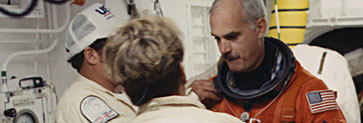By Dr. Alexander Laufer
A close colleague of mine has taught and written extensively about strategic planning and project planning. In fact, he is regarded as an expert on these subjects. Observe his actual behavior, however, and it is clear that he is a very poor planner indeed. Rarely does he take time to plan anything systematically. What’s more, my friend was completely unaware of this wide gap between his espoused theory and his ” theory-in-use,” until I felt obliged to point this out to him.
Unfortunately, unawareness seems to be the norm rather than the exception. Let me offer another example, this one about myself. In 1991, following seven years of extensive research on project planning in a dynamic environment, I was ready to test my research results. Procter & Gamble (P&G) met my requirements for a successful organization operating in a dynamic environment. My key message to P&G was this: ” Project success depends primarily on planning and control, which accommodate uncertainty.” I stressed the need for successive refinements of plans, for experimenting, for prototyping, and for managing by moving about.
As I started interacting with individuals and teams, I found that the most experienced and successful project managers had already applied many of my concepts, though not always in the most systematic and formal manner. That was expected and fell in line with my charter. I was supposed to try and introduce these concepts in a formal way throughout the company.
What I didn’t anticipate is that these experienced and successful project managers applied a major concept that was not part of my arsenal. They practiced teamwork. I observed through my own eyes how they all behaved on the job. They spent a great deal of effort to develop teamwork based on trust and mutual interdependence. They practiced it religiously, and it was central to the way they managed their projects.
I received the message directly from so many different individuals and always in an unambiguous way. It was almost impossible to ignore the importance of teamwork.
It was clear that I would have to change my message. More importantly, I had to change my mindset, quickly and fundamentally. And I did. The only difficult thing to understand was why I hadn’t already recognized the value of teamwork to project success.
During the 1970s, prior to joining university life, I worked for about eight years as a practitioner, first as a project engineer and later as a project manager. Looking back, I saw that my implicit “theory in use” as a practitioner was trust-based teamwork. But when I started my career as a researcher I somehow — without any noticeable difficulty — assumed the prevailing academic mindset in construction management circles, which at the time completely ignored teamwork.
But how had I lived for more than ten years without recognizing the gap between my own theory-in-use and my espoused theory? Peter Senge, from MIT, asserts that this gap is quite common, and explains that it is difficult to notice your own theory-in-use because ” the eye cannot see itself.” Senge suggests that you may want to ask the help of a good friend, a “ruthlessly compassionate” friend, to help you recognize your theory-in-use. I could have used such a friend ten years earlier. As did my friend, whom I started this story by telling you about.







